It has been about 3 months since I last did an amphibious landing on our intertidal shores. The previous trip was to Pulau Semakau to check on the oil spill situation during the Lunar New Year. Today, we are doing an amphibious landing on one of the terumbus we have in Singapore. Terumbu refers to submerged reef. During high tide, it looks no different from any sea surface. The reef is being submerged. However, during the period of low spring tide, the tide falls below the reef, exposing the reef. It looks as though a piece of land has emerged from the sea and sank back a few hours later.
So where exactly is Terumbu Pempang Laut? Take a look at this google map image by Ria Tan.
From the image, you can see that Terumbu Pempang Laut is the furthest submerged reef northwest of Pulau Hantu. This is my first time visiting this reef. I have yet to visit Terumbu Pempang Tengah and Terumbu Pempang Darat.
On journey to the submerged reef, we encountered the scary passing storm which turned the southern sky dark and threatened us with lightnings.
 |
| Dark clouds in the sky as we made our way to Terumbu Pempang Laut |
Lucky, the clouds passed by quickly and by the time we reached the terumbu, the rain had passed us. It was great as I will be able to fly the drone. We were treated with a dramatic sunrise behind Pulau Bukom oil refinery.
 |
| Beautiful sunrise. |
While on our way to the reef from the dinghy, the sky presented us with a rainbow.
 |
| Rainbow after the rain |
I had some time to spend checking out the shore before flying the drone. Unfortunately, I did not cover much ground on foot and wished I could reach further.
I only managed to come across one
common sea star (
Archaster typicus), but other saw a large group of them.
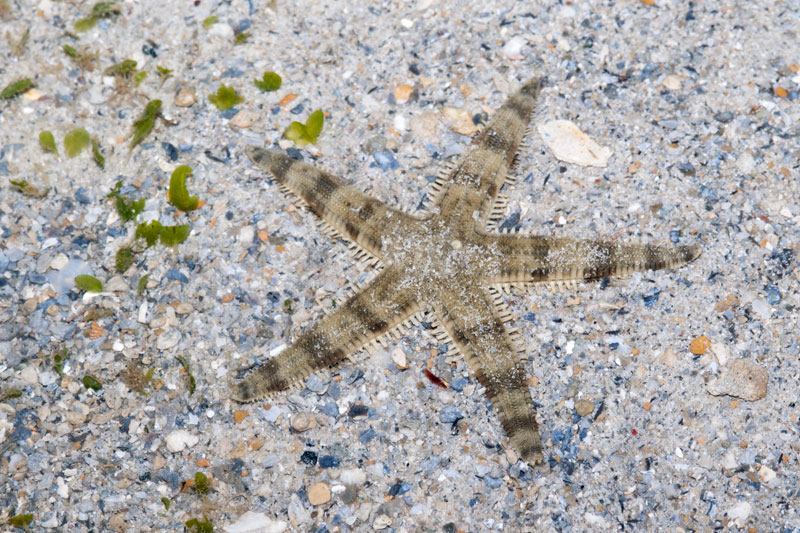 |
| Common sea star |
It was not easy but I came across a few
wiggly reef star anemone. This anemone is very shy and will retract its tentacles and disappear from the substrate at the slightest sign of danger or disturbance.
 |
| Wiggly reef star anemone |
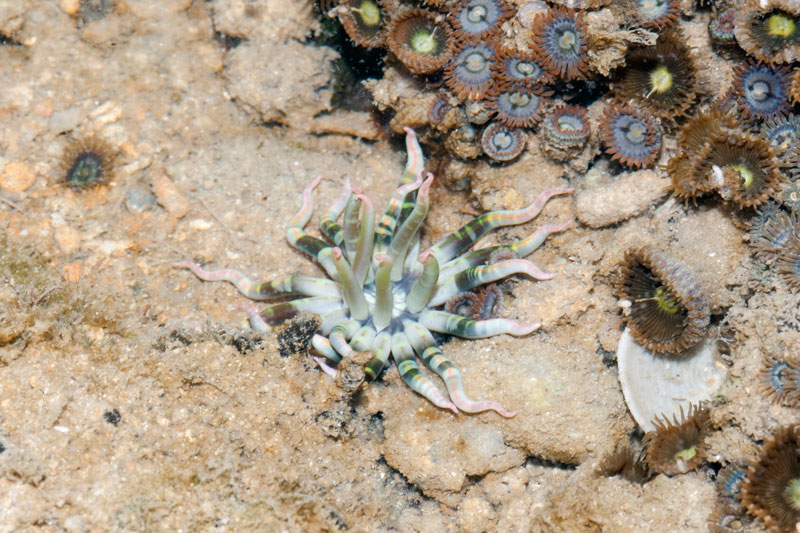 |
| Wiggly reef star anemone with a different colour |
The reef had pretty medium patches of the
blue jorunna sponge (
Neopetrosia sp.), which appears to be the favourite food of the
polka-dot jorunna nudibranch (
Jorunna funebris). Alas, I did not come across any of the nudibranch.
 |
| Blue jorunna sponge |
I saw two swimming crabs, one of which is the
blue-spined swimming crab (
Thalamita prymna), I think, and the other is a
flower crab (
Portunus pelagicus).
 |
| Blue-spined swimming crab |
The flower crab was scavenging on the sand and showed me its pincers when I approached nearer. Obviously, it was not happy with me invading its private space.
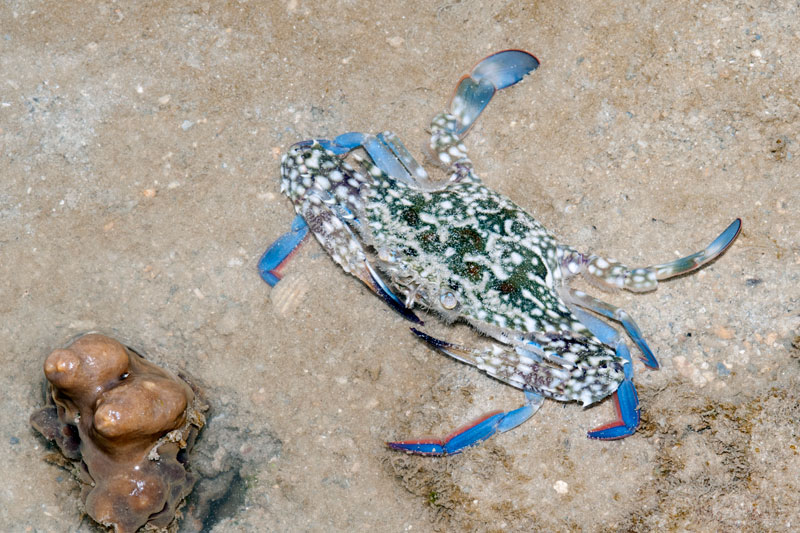 |
| Flower crab |
 |
| "Argh... get away from me!" |
There is a good coverage of the
spoon seagrass (
Halophila ovalis) on some parts of the terumbu. Thanks to the drone, I was able to get a good aerial shot of the spoon seagrass coverage. Alas, no dugong feeding trail spotted this time.
 |
| Spoon seagrass coverage |
In a nearby area of dry and shallow pool, I heard some splashing going on and noticed an animal crossing between pool with a dry patch in between. It was a
saddled shrimp-goby (
Cryptocentrus maudae). The shrimp-goby is often seen with its snapping shrimp partner. However, this shrimp-goby looks lonely and does not seem to associate itself with the burrow it stopped on. Perhaps it has not found a snapping shrimp partner yet?
 |
| Saddled shrimp-goby |
Towards the end of the trip, Ria found a young
fluted giant clam (
Tridacna squamosa).
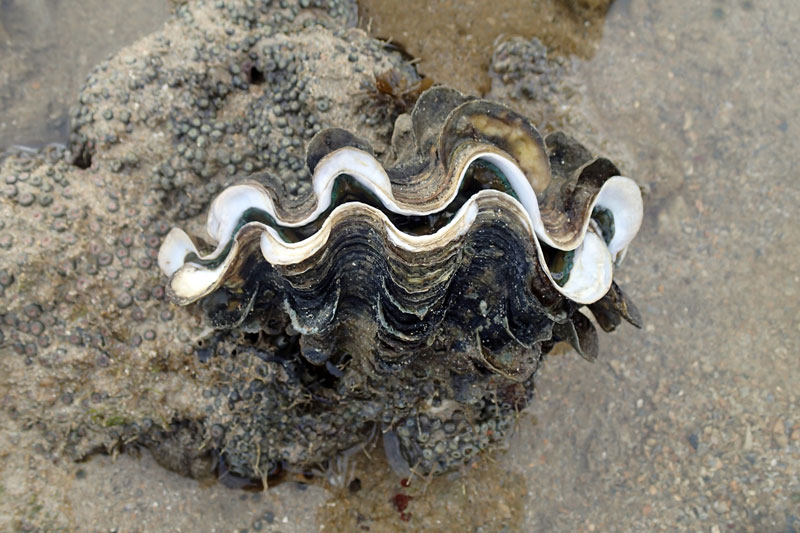 |
| Young fluted giant clam |
 |
| Size of the giant clam, with my bootie as size reference. |
Then I came across an empty
cone snail shell. However, not every animal should be touch or handled with your bare hands. The cone snail is one of the most dangerous animals on our shores as it can inject venom into our body without us even feeling it.
 |
| Cone snail, overview. |
 |
| Cone snail, underside. |
 |
| Cone snail, flattened end. |
We ended the trip with the latest way to ride the dinghy back to the boat. I called it the tug and push method, which does not require boat engine. The boat was so near the edge of the reef that we were about 3m away and the dinghy only required manpower to pull it from the reef to the boat.
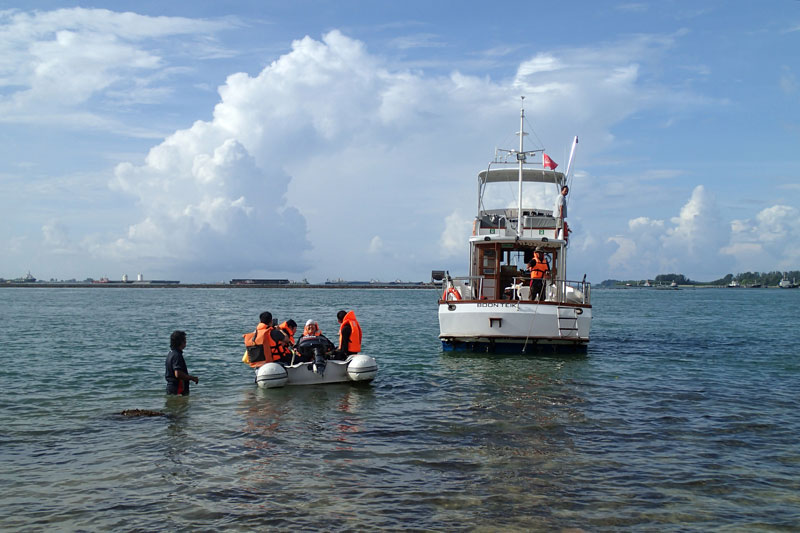 |
| New form of dinghy adventure. |
 |
| No engine required. |
Lastly, here is the aerial footage of Terumbu Pempang Laut.
Posts by others:
Chay Hoon on her
Facebook
James Chua on his
Facebook
Russel Low on his
Facebook
Ria Tan -
Temrubu Pempang Laut chek up




















No comments:
Post a Comment